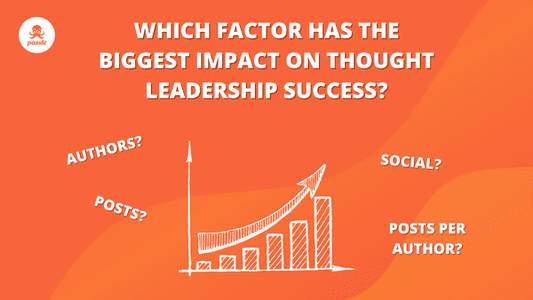Insights > Data review: Adding authors has the biggest impact on thought leadership program success
PublishedData review: Adding authors has the biggest impact on thought leadership program success

This week, we took a look at 7 years of content from a top 5 global law firm to find out what factors were most influential on the success of their thought leadership.
We looked at the relationship between total reads of thought leadership content and:
- The number of posts written
- The number of active authors
- The number of social media reads
- The number of posts per author
A standard correlation function shows how each of the above variables affected post-views. The closer to 1, the stronger the correlation. Here's what that correlation showed:

Each of these data points offers an interesting insight.
Adding authors had the strongest impact on content reads.
Surprisingly, it wasn't the amount of content produced, but the number of authors producing content that had the strongest relationship to post views.
Adding social media reads adds directly to the total for post views. Seeing the number of active authors having the same correlation (0.97) as social media reads shows just how close the connection is between having more authors and earning more views.
This may prompt a rethink for those running thought leadership programs. The focus has often been driving content from existing authors. In practice, onboarding and training new authors for the program is what has the biggest impact on content engagement.

More content is good, but beware of pushing lots of content from a few authors.
As expected, we saw a strong relationship between the number of posts written and the number of post views (0.85). Surprisingly though, we actually see a negative relationship (-0.76) between the number of posts per author and content readership.
Counter to conventional thinking, as posts per author increase, we see a drop in the amount of content read.
So, while more content is better, it needs to come alongside an increase in the number of authors actively writing content.

Interpreting this data
While the data from this set comes from hundreds of thousands of reads from hundreds of authors across seven years, it still only represents a single large firm. The data set used is helpful as a first indication of where marketers and BD professionals can focus their efforts to stay closer to clients and prospects thought leadership, but we should be aware of its limitations.
